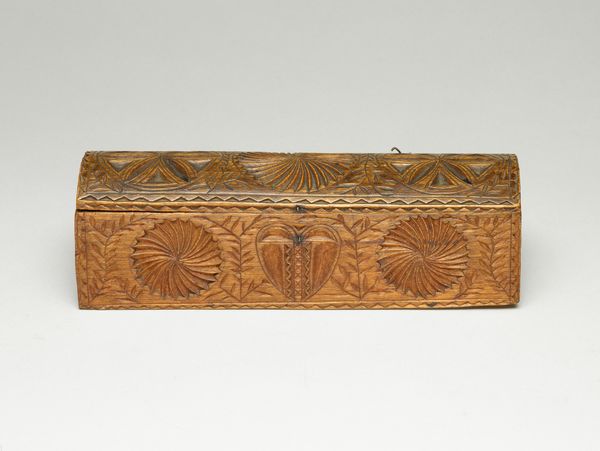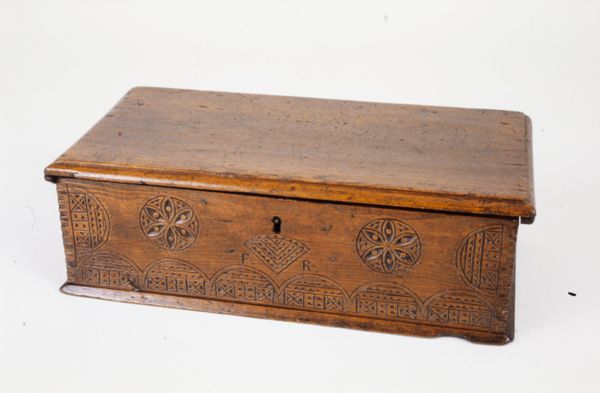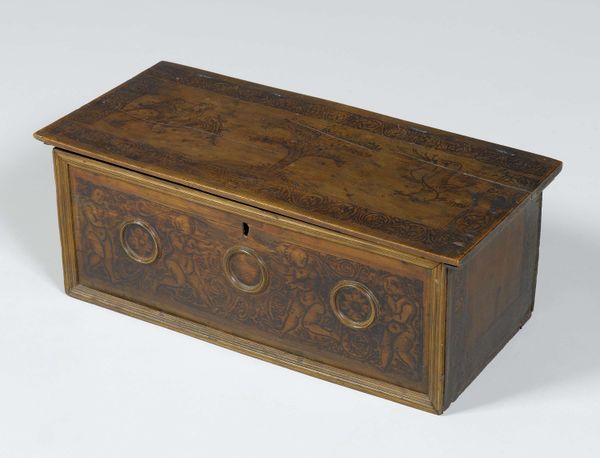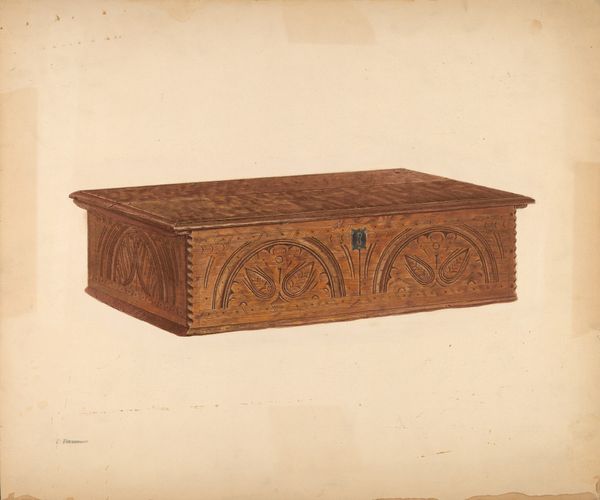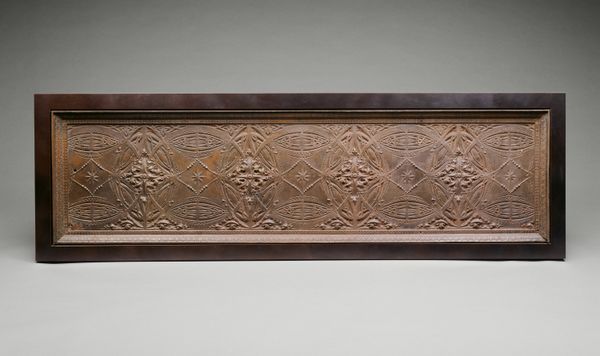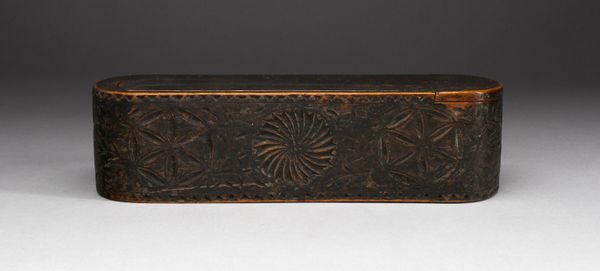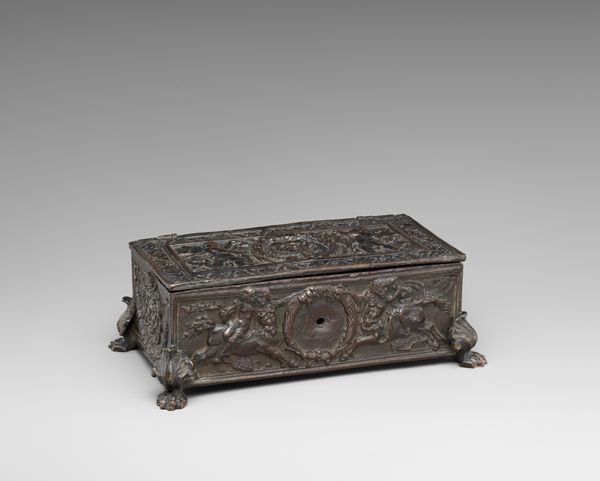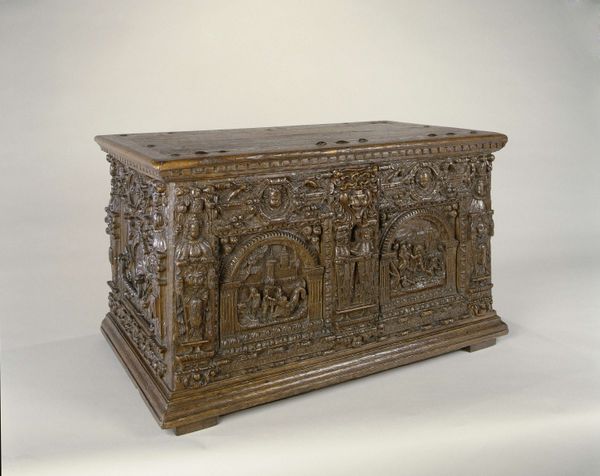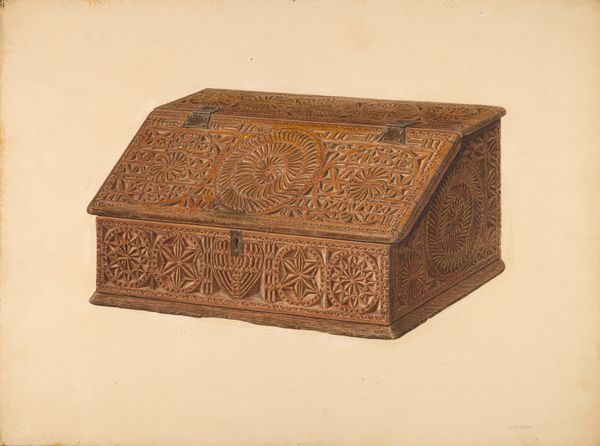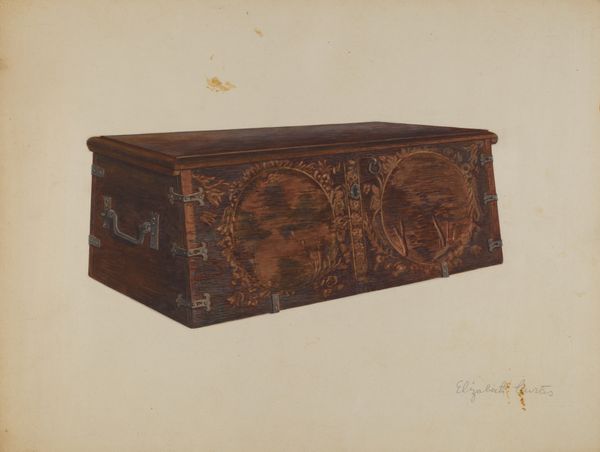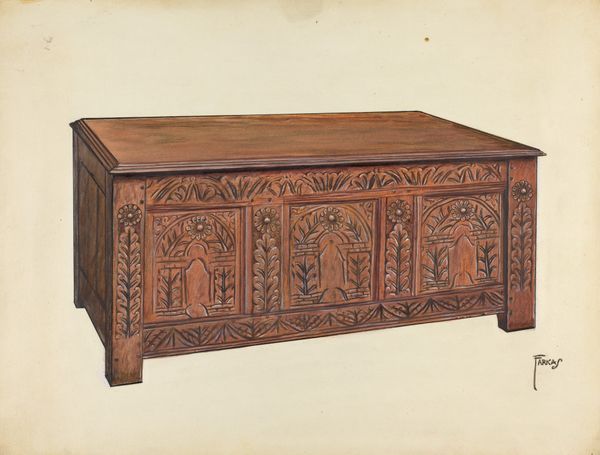
carving, woodcut, wood
#
wood texture
#
folk-art
#
carving
#
furniture
#
folk-art
#
woodcut
#
wood
#
decorative-art
Dimensions: 24.8 × 63.5 × 45.7 cm (9 3/4 × 25 × 18 in.)
Copyright: Public Domain
Curator: Up next, we have a piece titled simply, "Box." It's estimated to have been created sometime between 1650 and 1700, and its maker remains anonymous. Editor: The very plain, aged wooden surface of the lid gives this box a sense of antiquity, while the sides have intricate carvings giving the piece more dynamic detail. I imagine it sitting in a dimly lit room. Curator: Precisely! The carvings, done in a folk-art style, offer clues to the box’s original context. These motifs might reflect common beliefs, social roles, or specific narratives within the community where it was made. Perhaps it was commissioned, maybe even by a tradesman to store their goods. Editor: Yes, the texture of the wood, created by what looks to be careful carving and woodcut techniques, highlights its handmade qualities. The formal symmetry within the patterned arcs makes it quite soothing to the eye despite its small imperfections and signs of aging. Curator: Absolutely, the signs of age tell their own story about how valued and handled this object once was. As furniture, even something small like this box, serves a purpose but also signifies its owner's place within a household and community. What secrets might it have held, literally and figuratively? Editor: It’s compelling to observe how the minimalist shape of the box and detailed ornamentation complement each other. It directs attention towards the textural interplay of the wooden surface. This contrast gives this folk piece so much depth. Curator: I agree. These kinds of artifacts serve to illuminate domestic life centuries ago, revealing not just the functional purposes objects fulfilled but also the shared symbolic language of a particular society. It encourages us to reflect on the craftsmanship and community behind its creation. Editor: Reflecting on its components helps understand this artwork as a union between function and detailed design, prompting us to observe folk pieces under the careful consideration granted to pieces from prominent design movements.
Comments
No comments
Be the first to comment and join the conversation on the ultimate creative platform.
